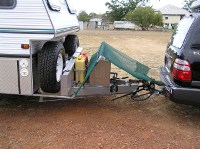Australia So Much to See


Much of
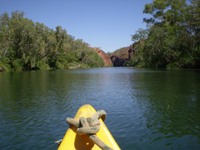
There are numerous versions of screens in the front of the caravan, sloping slightly forward to bounce stones down to the road instead
of into the rear of the tow vehicle, and under slung guards with a variety of methods to allow turning where attached to the vehicle. Most are from heavy duty shade cloth and many are home made.
If using large mud flaps, do not extend the full width of
your vehicle, as without a gap there is poor air flow for cooling and drag will reduce vehicle efficiency. The brush as used
around heavy haulage truck tyres can be used in place of a solid large mud flap.
Rear windows can be protected from stones
bounced off the trailer by covering with cardboard or thick clear plastic sheeting. Attachment methods range from masking tape
to Velcro tabs, although all can come loose, particularly in very hot weather.
These are invaluable for monitoring the road behind you easily and constantly when towing. They are not so useful on dusty dirt roads as the cloud of dirt behind the caravan obscured the vision. You can also have a reversing camera in the back of your tow vehicle using the one monitor and switching between, which makes it easy for the driver to back onto the caravan to hitch up. Ensure that the camera for the caravan is focused for distance as there is a difference between these as rear view cameras and close vision focuses reversing cameras.
A reversing camera has close focus and point downwards for easy reversing. It is of limited use out on the road. A rear view camera has a long narrow focus and is good for seeing well down the road behind you; invaluable when towing. It is also of some assistance when reversing into a campsite.
There are numerous options,
ranging from purchasing a camera and monitor for a few dollars from China and fitting it yourself if you are that way inclined, to
spending over $1,000 on a fully integrated top of the range system installed Ė ideally built in when the caravan is manufactured.
We have had both as we started out with a small single axle camper.
Advantages: We could spin it round by hand if stuck
in a tight spot. Less tyres to maintain.
Disadvantages: Stuff was tossed from one side of the cupboards to the other
(we travel off the bitumen frequently), damage to fittings, milk bottles and cartons leaking from the bottom from the bouncing. I
wouldn't even try and take eggs!
My manís reasoning had more to do with safety in case of a blowout or losing a wheel,
and general stability of the unit. There is also less thrust up and down on your tow hitch with the van stable on dual axles.
Unless you have a very small caravan or a camper trailer and pack light, I thoroughly recommend tandem.
How often will you use it? The walls are heavy so if you won't use them on that trip, leave them at home. If we want shade or shelter from rain, putting out the roof part as an awning is sufficient. A simple wind out awning is more suitable for travellers like us who move on most days, but it cannot be used in very windy conditions. A full awning is a large extra room for those who travel with children, live full time in their caravan and those who stay at one place for some time. With our travel style of frequent moves, we do not see the need to put out an annex or awning at all when stopping only for a day or two. With only two of us, we do not need the annex as an extra room, preferring to take our chairs out under a tree and watch the birds.
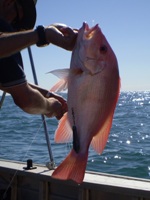
Many large motor homes and some caravans are fitted with a sullage tank to collect waste kitchen and bathroom water. Although
there are areas that require you to contain and remove waste water, over much of
Whereas someone living full time in a large caravan may want to carry several hundred litres of water and shower every day even when
out in the bush, for the average traveller, two or three 80 litre tanks and a couple of twenty litres jerry cans can be manageable. For those who mostly go to caravan parks, one tank may be enough. See economical use of water and what to do when you have no
water on these links. Your choice of tanks will depend on your style of travel and the size and carrying capacity of your caravan
or motor home.
This again is a personal choice. Those living full time in their caravan may well want the convenience of a built in washing machine, whereas many part time travellers like us find it easy to use buckets and an occasional laundromat rather than carry something extra. Machines range from the purpose built models which can be built in when the van is manufactured, to small cheap portable twin tubs from on line discount stores and eBay which do the job well for those who have them. See details of the washing machine options in Q&A Washing Machines for Caravans
For more on doing the washing click here.
Are air conditioners and heaters essential in
Built in roof extraction fans running from the caravan batteries can be effective at cooling the caravan if not in very hot climates. Fantastic Air Vent is one such option. Use one to draw air in and the other to draw air out.
Most modern full sized caravans and motor homes have inbuilt roof mounted air conditioners. In addition to powered sites, a 2 or 2.4 kva generator will run most, and the small area of the van cools quickly.
Some caravanners have found fitting a normal household split system air conditioner to their caravan satisfactory, but they are not build for constant movement so may have a limited life. They require wall space to fit the air conditioner and also require a suitable place to mount the external fan box.
Read about running an air conditioner.
Heaters: If you intend to travel in cold areas in winter, the ideal would be a built in diesel (such as Webasto, Dometic, Eberspacher or a number of cheaper brands) or an external gas heater (Truma). These can be ducted to the bathroom and or the living areas separately. A diesel heater can be fitted by an owner, but a gas heater must be installed by a licensed gas fitter. However in normal temperatures with a fully enclosed caravan, I find putting on a pullover and/or shutting the windows on a cold night (but leaving the lower door safety vents, and the roof vents open) adequate to keep us warm. Another alternatives if you are camping in very cold areas is a heated jacket. If sleeping under canvas such as in a camper trailer or expanding caravan, a cold night can be most uncomfortable and heaters are not suitable. Thick bed socks, tracksuits over pyjamas, and extra padding under you as well as on top can keep you warm enough. A zero rated sleeping bag keeps warmth in and has the necessary insulation both uder and over you. Some people use electric blankets, either purchasing a 12 volt appliance or running a 240 volt blanket from an inverter, if they have a good supply of power. Heaters such as portable gas heaters are not suitable or safe to be used in caravans and campers. Do not consider suggestions such as a flower pot placed over a gas burner. Read about the dangers of Carbon Monoxide poisoning from using unflued gas heaters. See Diesel Gas Interior Heating from RV Books
If you intend staying only in powered sites,
a small electric heater is an easy solution. Although our air conditioner has a heat cycle (really just an element which
works as a fan heater), even when on mains power we have not used it on heat cycle as a heater at ceiling level will not be efficient.
Reverse cycle air conditioners on heat cycle often cut out at the low temperatures when you need heating the most. In 2009 we
moved from a very warm
More features to choose to have in your caravan, motor home or camper. Do you want an airconditioner or a heater? Will you need a washing machine? How many water tanks? What about a grey water (sullage) tank? Do you need a fully enclosed annex, or just an awning? Single or tandem axle? What about a rear view camera or a stone deflector? Is it worth taking a boat around Australia? Can you manage without a ladder?
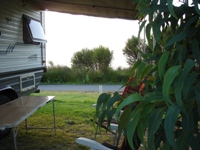
For a small lightly built caravan, a wireless camera may be suitable, but can be subject to outside interference in cities. For
hard wired, a quick and easy method of connection and disconnection to the tow vehicle is a good idea and this can also be a weak
point in the communication line if not using a good and secure fitting.
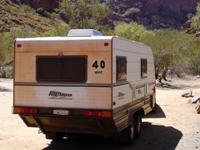
You may need a ladder regularly to put out your awning, and occasionally to clean or check you solar panels, but in most cases, a ladder is just taking up more room and adding a bit more weight. If you do really need to access you roof while travelling, you can usually borrow a ladder from someone in a town. A small step ladder may be adequate for accessing the awning.
TXP make good quality collapsible and fold up (squeezebox) ladders for easy storage. There are other similar versions
available through auto and discount chains, but they may not be adequate for the weightier people.
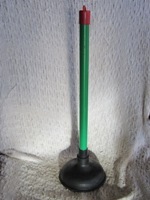
There are many options to reduce stone damage to the front of your caravan and the rear of your vehicle when travelling on stony roads.
See a variety of very different ideas on Pictures of stone deflectors.
